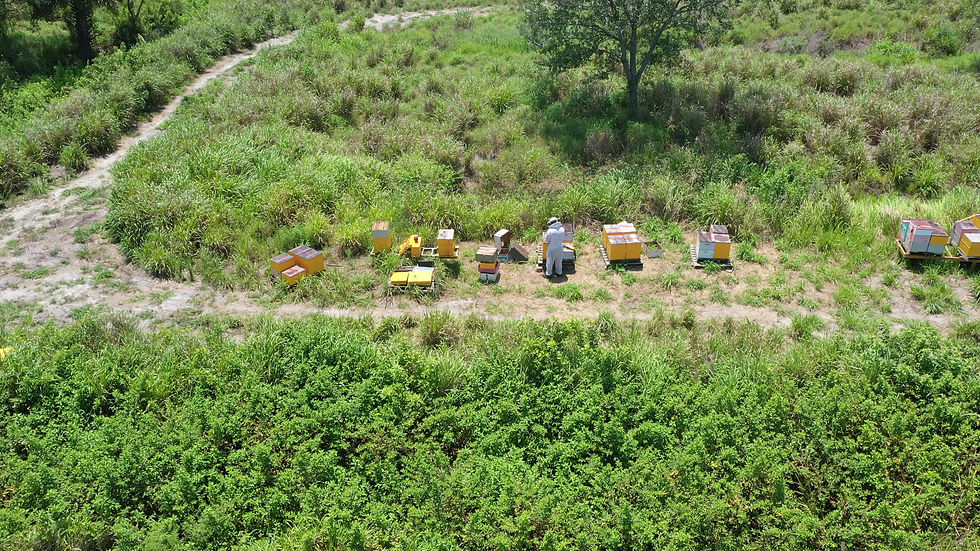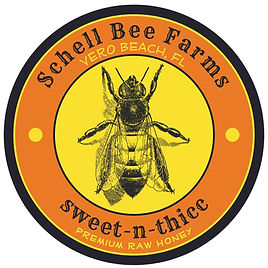Free shipping on all orders over $50. Shop Now 📦


"Excited to breathe life into extraordinary quality and the awareness of how our actions impact the environment."
Best sellers
Our Beekeeping Philosophy
"We are proud of these fundamental beliefs and guiding principles which shape our behavior and decision-making."
Our stewardship preserves the future generations of the honey producing lifecycle, including resource conservation, ecological balance, and long-term viability.
Locally Sourced
Natural
What?
Isn't all honey natural?
Crafted with Care
Supporting Healthy Bee Populations
Real honey, often referred to as pure or raw honey, is a natural sweet substance produced entirely by honeybees from the nectar of flowers or secretions of plants.
Bees collect this nectar, transform it through enzymatic processes in their hives, and store it as honeycomb, resulting in a viscous liquid that’s typically golden or amber in color.
It may naturally contain trace amounts of pollen, beeswax, enzymes, antioxidants, and other bee-derived compounds, but nothing else is added.
This makes real honey a complex mixture of sugars (primarily fructose and glucose), water (usually under 20%), and minor nutrients like vitamins, minerals, and bioactive elements that contribute to its potential health benefits, such as antibacterial properties and soothing effects on the throat.
In contrast, fake or adulterated honey is not purely bee-made; it’s often diluted or blended with cheaper sweeteners like high-fructose corn syrup, rice syrup, cane sugar, or other syrups to increase volume and cut costs, sometimes without any real honey at all.
This adulteration is widespread - estimates suggest over 75% of honey sold in U.S. stores may be fake or tainted, especially imports from countries like China, where practices like ultra-filtration (removing pollen to hide origins) or adding synthetic sugars are common.
The U.S. Food and Drug Administration (FDA) does not have a formal “standard of identity” for real honey, meaning there’s no legally binding definition that strictly outlines what qualifies as “real” honey versus fake.
Instead, the FDA provides guidance on proper labeling to prevent misbranding or adulteration under the Federal Food, Drug, and Cosmetic Act - and products labeled simply as “honey” should be 100% honey without added sugars, sweeteners, or other substances. If anything is added, it must be clearly labeled as a “blend” or “honey product.”
However, enforcement can be lax, and without pollen (which is often removed in fake honey), tracing origins becomes difficult, allowing fraudulent products to slip through.
This lack of a rigid definition has fueled the global fake honey problem, as manufacturers exploit high demand and rising prices by cutting corners.
To distinguish real honey from fake honey:
-
Look for “raw,” “unfiltered,” or “local” honey, and check for a single ingredient - “honey.”
-
Avoid vague terms like “honey blend” or products without a clear origin.
-
Certifications like “True Source Certified” indicate third-party verification of authenticity and ethical sourcing.
-
Visually and texturally, real honey is often thicker, more opaque, and may crystallize over time (forming sugar-like grains that can be softened by gentle warming), while fake honey stays runny and clear indefinitely due to additives.
-
Real honey has a floral, nuanced aroma and taste that varies by flower source (e.g., clover or wildflower), whereas fake honey versions can smell sour, chemical-like, or overly sweet and lack depth.
Simple at-home tests can provide clues:
(though they’re not scientifically foolproof and should be used alongside other checks (lab methods like DNA pollen analysis or isotope testing are the gold standard for confirmation).
• Water Test
Drop a teaspoon of honey into room-temperature water. Real honey usually sinks and stays clumped, dissolving only if stirred, while fake often dissolves quickly due to added water or syrups.
• Thumb Test
Place a drop on your thumb - real honey sticks without spreading fast; fake is runnier.
• Flame Test
Dip a match or cotton swab in honey and try lighting it. Real honey, being low in moisture, may burn cleanly; fake with extra water often won’t ignite easily.
• Vinegar Test
Mix honey with white vinegar - foaming suggests adulterants like chalk; no reaction is better for real honey.
• Crystallization Test
Store it for months. Real honey crystallizes naturally, but fake resists this.
The best way to ensure you’re getting real honey is to buy from trusted sources like local beekeepers, farmers’ markets, or reputable brands that allow hive visits or provide transparency.
This supports ethical beekeeping amid challenges like colony collapse disorder and avoids the risks of fake imports.
Why bother?
Real honey offers genuine nutritional perks - like antioxidants that may fight inflammation and a lower glycemic index than refined sugar - while fake versions are essentially empty calories, potentially laced with contaminants, and contribute to bee industry harm.
By choosing real honey, you’re not just getting a superior product; you’re promoting sustainability and authenticity in a market rife with deception.





































